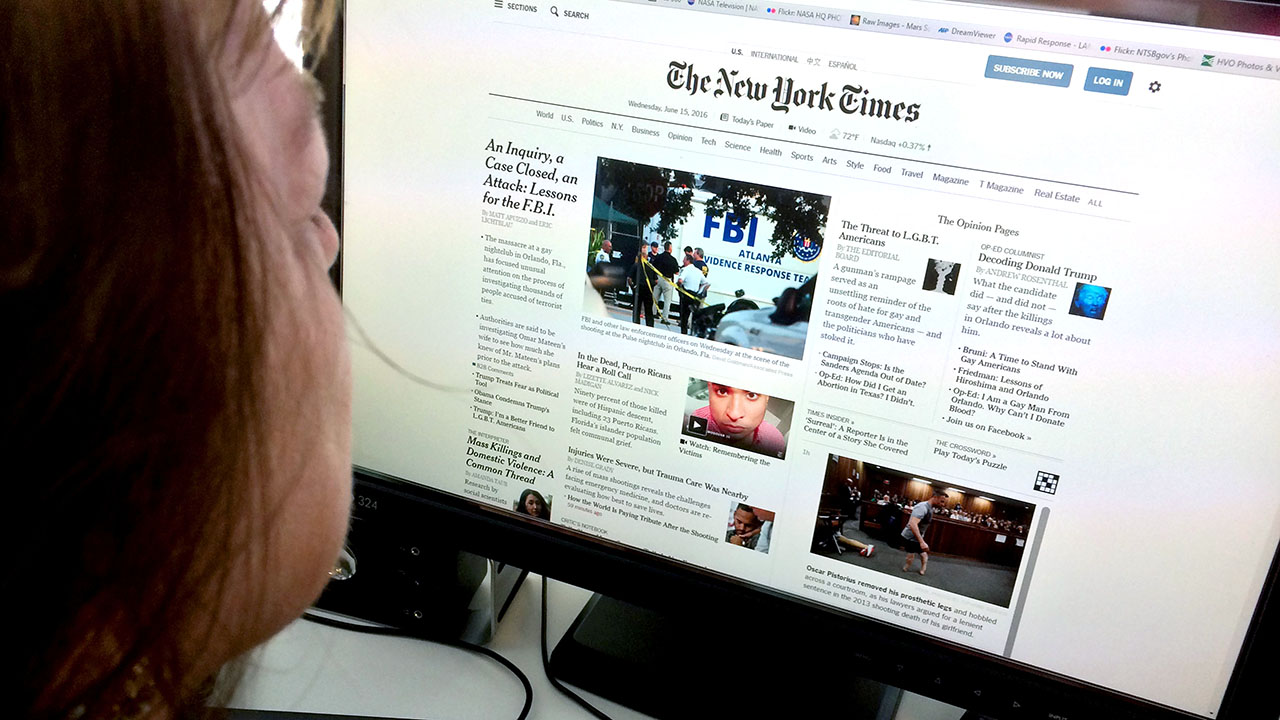DW News Taking In-Depth Evaluation on World Politics
DW News Taking In-Depth Evaluation on World Politics
Blog Article
The Evolution of Journalism in the Age of Information Online
In the quickly changing landscape of journalism, the electronic age has introduced a new age where the immediacy of online information reshapes both its development and consumption. As digital platforms multiply, they enhance interactivity and widen the reach of journalism, yet concurrently test standard standards with the speedy spread of info and misinformation alike. The increase of resident journalists and independent voices better makes complex the narrative, adding to a vivid yet precarious media environment. As we browse these complexities, one have to wonder regarding the future of journalistic honesty and how it can be secured among these transformative changes.

Surge of Digital News Operatings Systems
The surge of digital information platforms has basically transformed the landscape of journalism, noting a change from conventional print media to vibrant, on the internet spaces. This development was moved by innovations in technology and the boosting accessibility of the web, which permitted news to be disseminated rapidly and extensively. Unlike their print equivalents, digital platforms can instantaneously upgrade content, supplying real-time information insurance coverage and analysis that interest the contemporary viewers's need for immediacy and relevance.
Digital platforms have likewise expanded the extent of journalism, enabling a diversification of voices and point of views. With lower obstacles to access, independent reporters and smaller sized wire service can reach worldwide target markets, testing the syndicate as soon as held by developed media corporations. This democratization of information has actually improved the general public discussion, supplying differed stories and providing to particular niche passions that were formerly underserved.
Moreover, the combination of multimedia aspects such as video, sound, and interactive graphics boosts narration, making information a lot more obtainable and interesting (dw news). This multimedia come close to not just brings in a more comprehensive target market however also aids in the understanding of intricate tales. Fundamentally, digital systems have redefined journalism, fostering innovation and adaptability in an ever-evolving media atmosphere

Effect of Social Media
Social network systems have additionally reinvented journalism by modifying just how information is eaten and shared. These systems have actually equalized information circulation, making it possible for any person with net accessibility to report occasions in real-time. This immediacy has put conventional news outlets in a race to maintain, engaging them to take on much faster reporting methods. Furthermore, social networks has expanded target markets, providing reporters access to global viewership beyond geographical restraints.

The interactive nature of social media cultivates interaction, allowing target markets to join discussions, share point of views, and add to information narratives. This communication improves the dynamic in between journalists and their target markets, promoting an extra participatory type of journalism. Nonetheless, this likewise places tremendous pressure on journalists to generate content that reverberates with audiences, frequently focusing on sensationalism to catch focus.
Moreover, social media platforms have actually come to be vital tools for journalists to source tales, assess public opinion, and network with industry peers. The reliance on social media likewise requires an essential examination of sources to guarantee the reputation of details shared.
Challenges of Misinformation
In the middle of the digital transformation of journalism, one considerable difficulty is the prevalent spread of false information. In a period where details is rapidly available and abundant, comparing legitimate information and produced material has ended up being progressively challenging. The sheer volume of information disseminated across different on the internet platforms frequently blurs the line in between reality and fiction, presenting a considerable danger to the stability of journalism.
Misinformation can spread swiftly via social media sites, where formulas prioritize engagement over accuracy, accidentally magnifying false narratives (dw news). This not just weakens public count on media institutions however additionally promotes an environment where deceitful material can influence popular opinion and decision-making procedures. The difficulty for journalists is twofold: to disprove fallacies efficiently and to promote strenuous criteria of fact-checking and verification
Further complicating this problem is the presence of deepfakes and innovative disinformation campaigns that utilize progressed technologies to develop misleading web content identical from legitimate reporting. As these innovations progress, so must the approaches and devices utilized by reporters to battle them. Dealing with misinformation calls for collaboration in between media organizations, innovation firms, and policymakers to establish thorough techniques that secure the authenticity of info in the electronic age.
Role of Resident Reporters
Browsing the landscape of misinformation highlights the transformative effect of person journalists within the digital world. As traditional media outlets face the large speed and volume of information dissemination online, resident reporters-- regular people equipped with smart devices and access to social networks-- are playing a significantly pivotal role. These grassroots contributors have come to be crucial in covering events quickly, usually providing real-time updates from the ground before mainstream media can respond.
Person reporters have actually democratized news reporting, amplifying voices that might otherwise stay unheard. By leveraging platforms like Twitter, Facebook, and Instagram, they offer varied viewpoints that test the stories often pushed by established media.
However, person journalism is improving the media landscape, compelling conventional outlets to adjust by incorporating user-generated material into their coverage. By cultivating neighborhood interaction and encouraging participatory journalism, these electronic writers add to an extra inclusive and vibrant information community. As citizen reporters continue to develop, their duty fit public discourse continues to be a crucial component of modern-day journalism.

Future of Journalistic Honesty
As the electronic age remains to progress, the future of journalistic stability faces unprecedented challenges and opportunities. The spreading of electronic platforms has democratized details circulation, allowing a broader variety of voices to add to the information landscape. Nonetheless, this has also led to the spread of false information and the erosion of rely on media. In this environment, keeping journalistic stability becomes paramount, calling for adherence to extensive ethical criteria and fact-checking processes.
The surge of man-made knowledge and algorithm-driven content curation even more complicates the landscape. While AI can boost reporting by assessing huge datasets and identifying patterns, it also presents risks of prejudice and manipulation. Reporters should therefore remain watchful, ensuring that innovation works as a tool for fact rather than distortion.
In addition, the financial pressures on traditional media electrical outlets Homepage demand cutting-edge company designs to sustain high quality journalism. Subscription-based designs, nonprofit financing, and partnerships with technology companies are arising as prospective solutions. Yet, they have to be gone after without compromising content independence.
Inevitably, the future of journalistic stability relies on the commitment of media and journalists companies to support openness, accountability, and an unwavering dedication to reality, amidst a quickly changing digital world.
Conclusion
The this article development of journalism in the digital age offers both difficulties and possibilities. The increase of electronic news platforms and social media sites has equalized information dissemination, encouraging a diverse variety of voices, consisting of person journalists. However, these improvements necessitate vigilant efforts to deal with misinformation and maintain journalistic honesty. The future of journalism depends upon the capacity to adapt innovative service models that sustain high quality reporting while preserving the trustworthiness and trust fund vital for informed public discourse.
The increase of electronic information systems has actually essentially changed the landscape of journalism, noting a change from typical print media to vibrant, on-line rooms. With reduced obstacles to access, independent reporters and smaller sized news organizations can reach global target markets, challenging the monopoly once held by developed media empires.Social media systems have actually additionally changed journalism by modifying just how information is taken in and shared. As conventional media outlets grapple with the sheer rate and quantity of news dissemination online, resident reporters-- regular people armed with mobile phones and accessibility to social media-- are playing a progressively crucial function. The increase of electronic news systems and social media has find out here now actually democratized details circulation, empowering a varied array of voices, including resident reporters.
Report this page